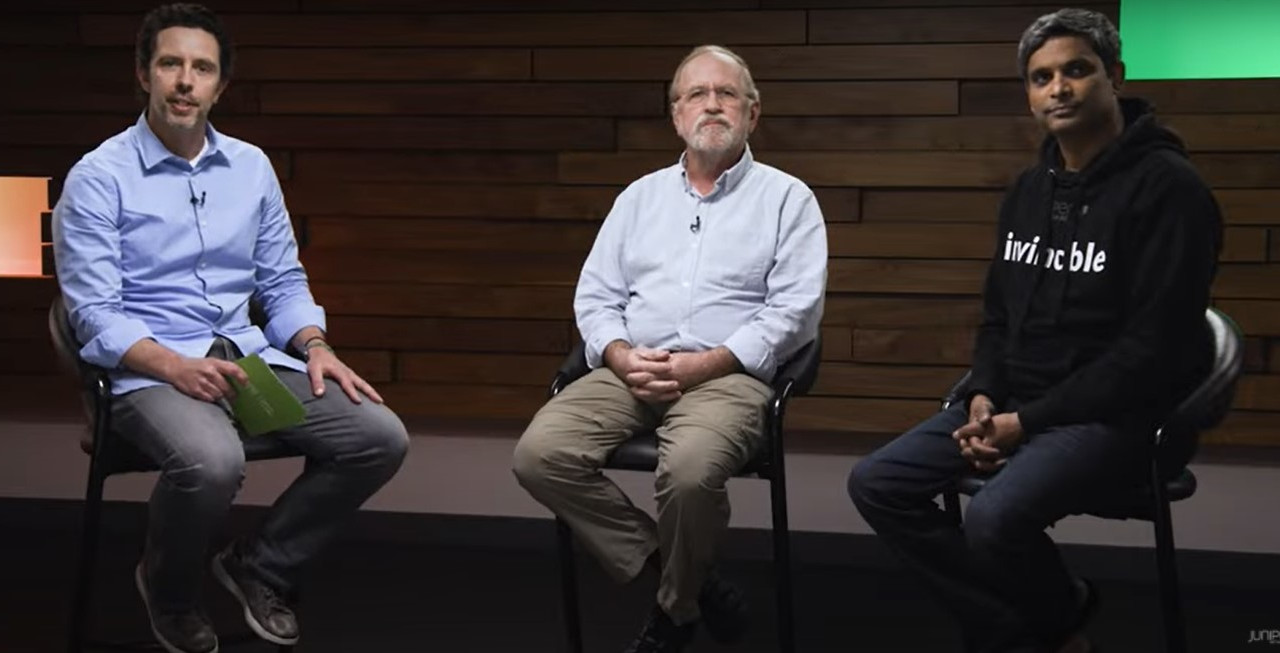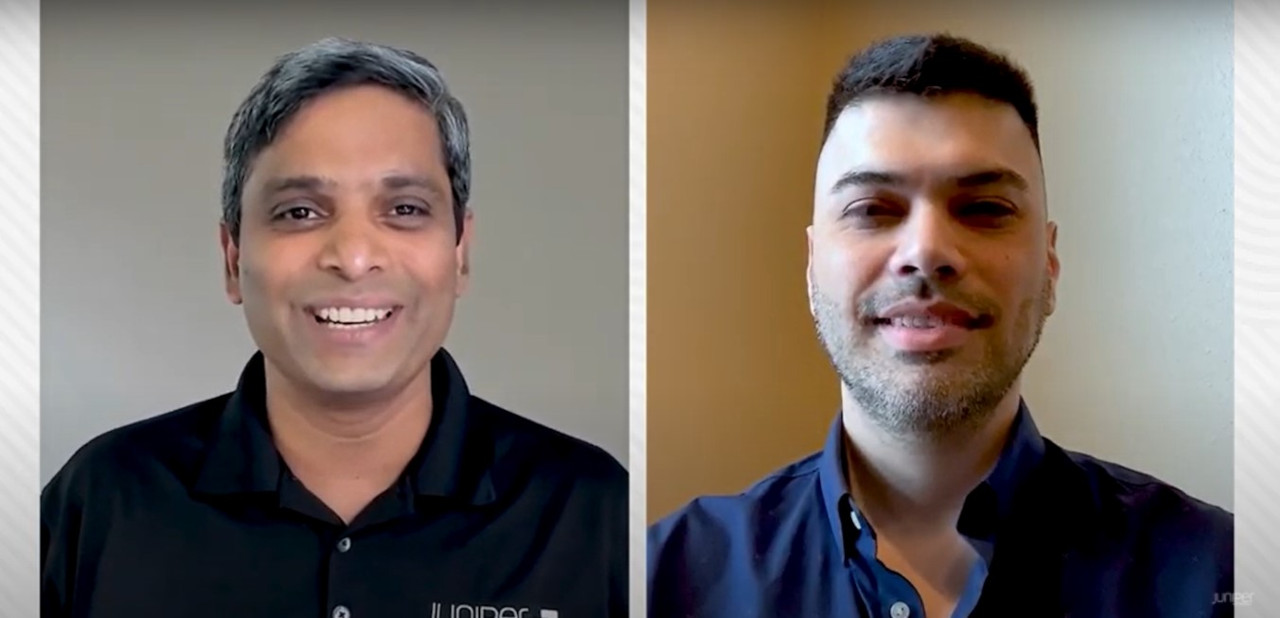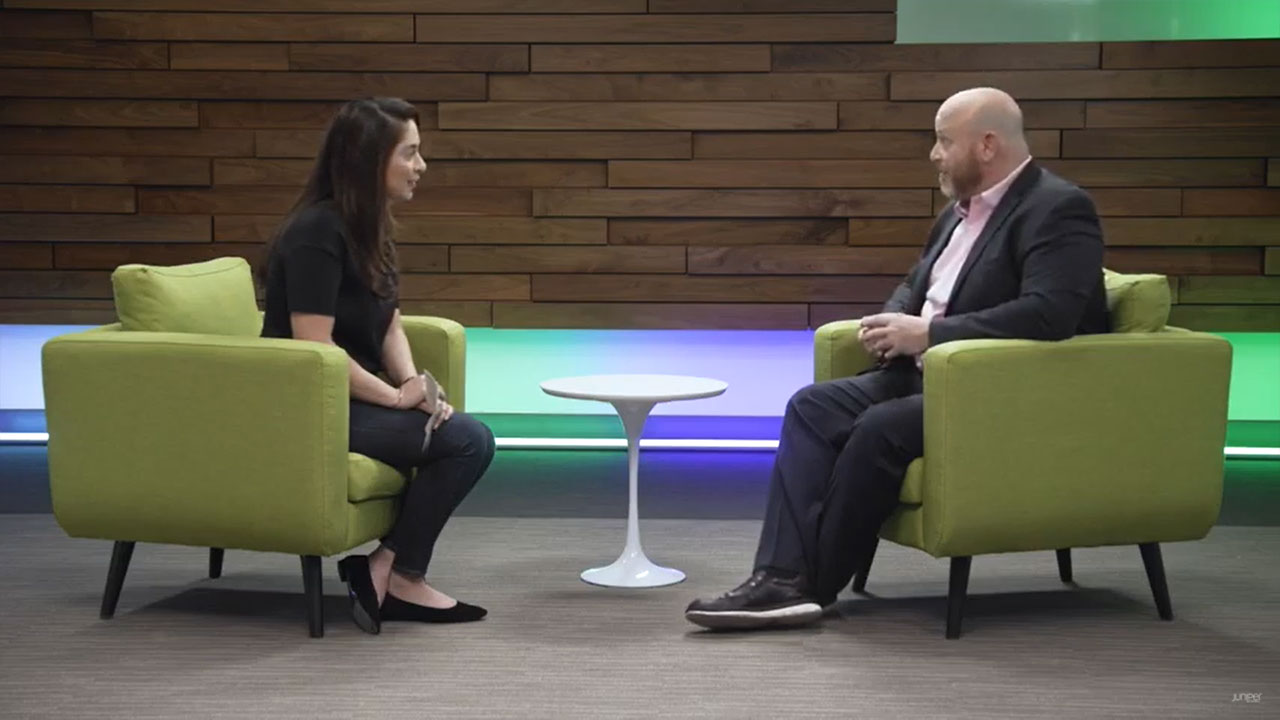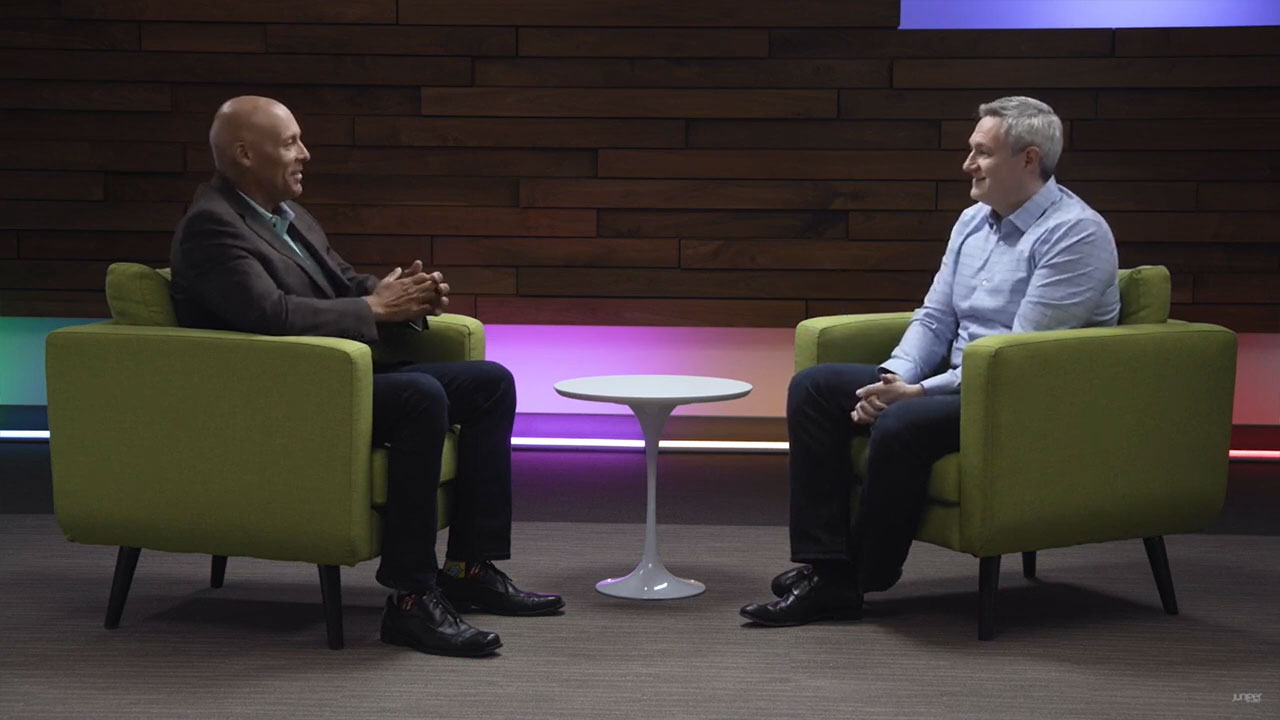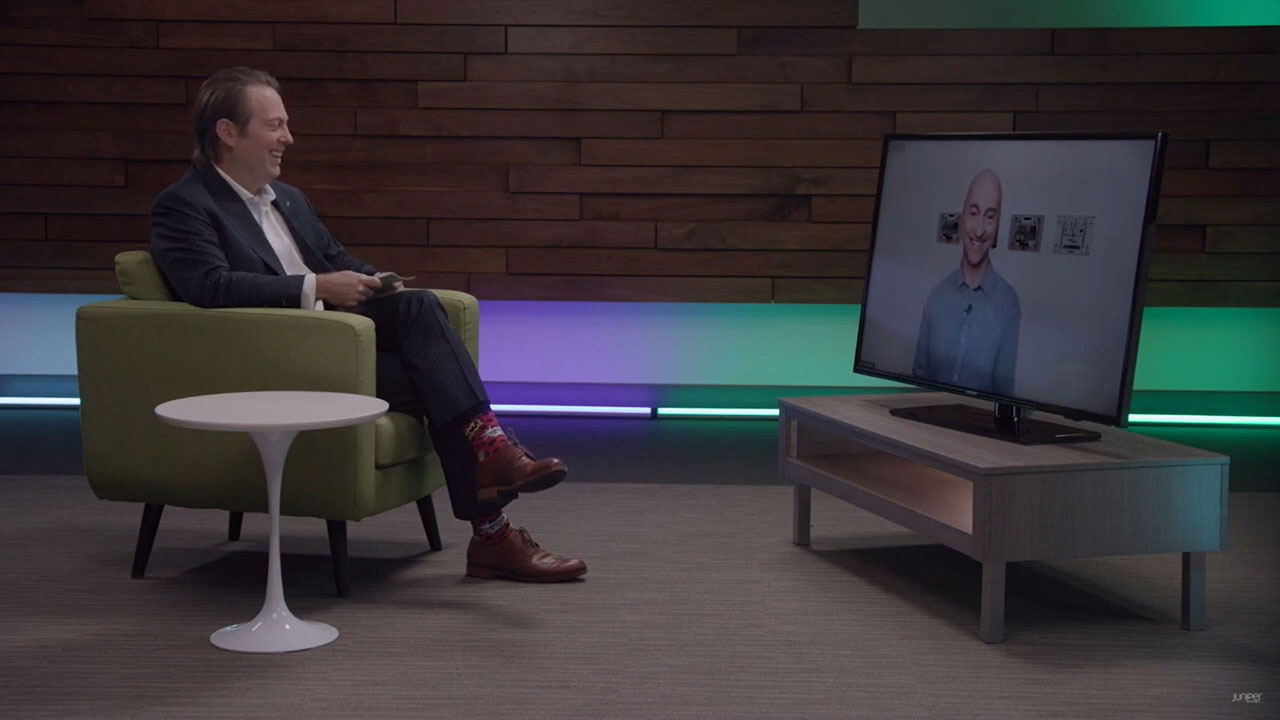AIOps to Deliver Better User Experience

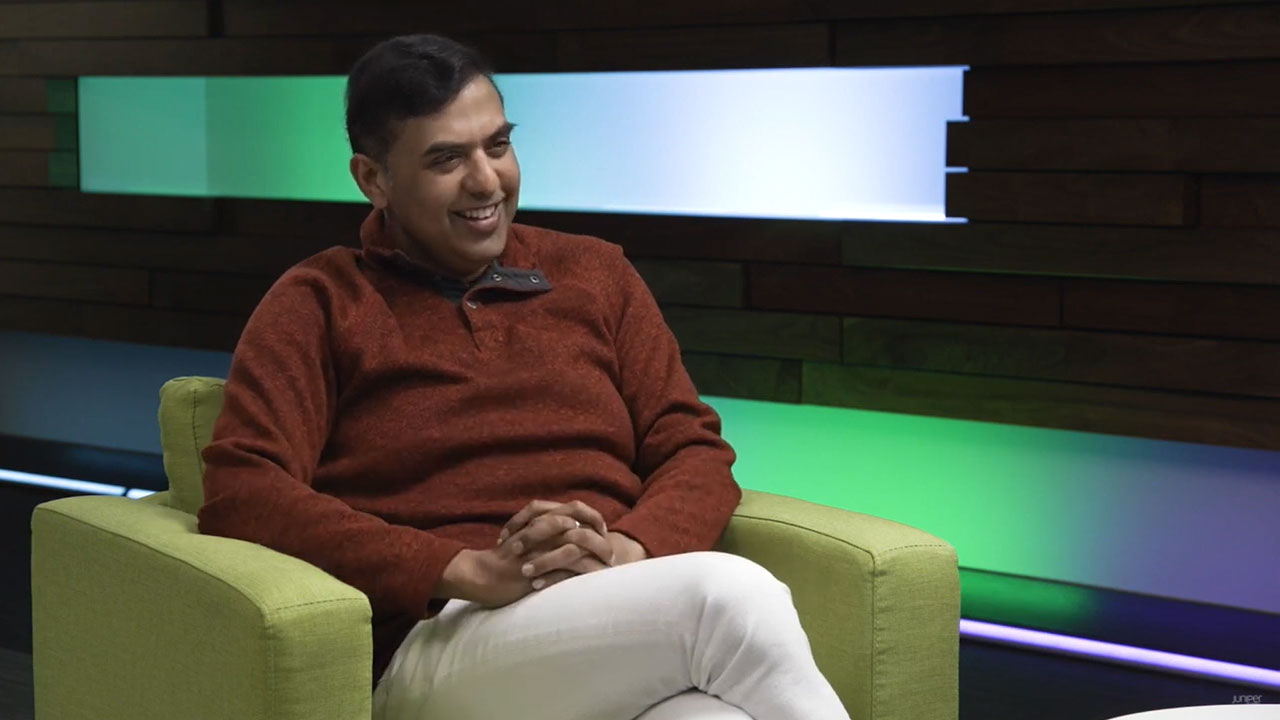
How to transform employee experiences with AIOps
Just as Autodesk transformed their customer experience from CDs to digital subscriptions, they’re also modernizing their employee experience to be on-demand, seamless, and frictionless. Whether employees are at home or on campus, learn how Autodesk is using AIOps to increase employee productivity and happiness while improving visibility and controlling access for the business.
Changing mindsets and processes is never easy, but Autodesk has shown that you can leverage data and artificial intelligence with Mist AI to quickly solve issues and scale faster with software in the cloud. See for yourself in one of our weekly demos.
At the Juniper Networks Global Summit, Juniper’s Sujai Hajela sat down with Prakash Kota from Autodesk to talk about how AIOps provides unparalleled insight, automation, and assurance for true “experience-first” networking.
You’ll learn
How Juniper helped Autodesk transform to cloud and meet its strategic objectives
How pandemic-wrought workplace changes have affected Autodesk and its journey
What the cloud transformation has meant for IT teams at Autodesk and what’s next
Who is this for?
Host

Guest speakers

Transcript
0:08 Hello, everyone.
0:09 My name is Sujai Hajela and I'm the Executive Vice President
0:12 and General Manager at Juniper Networks.
0:15 AIOps is a key component of any automated IT infrastructure,
0:20 improving everything from security and analytics to incident response times.
0:25 Today, we will be talking about the challenges
0:28 and opportunities available to enterprises through effective AIOps solutions,
0:33 and very importantly,
0:34 how it can ensure better user experiences.
0:39 Joining me today is Prakash Kota,
0:41 Senior Vice President and Chief Information Officer at Autodesk.
0:46 Prakash, welcome and thank you for joining us today.
0:51 Thank you, Sujai, for having me.
0:53 Prakash, as we get started,
0:55 I'm sure our audience would like to hear about Autodesk's objectives,
1:01 and later on in the conversation,
1:03 I really would want to get into this transformation,
1:05 which you've made from on-prem to everything cloud experience first.
1:10 All right, thanks, Sujai, for having me.
1:12 For those who don't know, Autodesk,
1:16 our vision is a better world designed and made for all.
1:20 All we do is we enable innovators with our design and make technology
1:26 so they can imagine the new possible.
1:29 We have been going through a huge transformation as a company
1:32 by moving to a subscription model.
1:35 We used to ship DVDs, now we give access to our software in the cloud.
1:39 It's always fun because I've seen that transformation throughout.
1:42 I've been with the company for a little over years.
1:46 I've seen probably-- fortunate to see all the transformation that we went through.
1:51 Coming to IT division
1:54 and the transformation that we have been going through is very similar,
1:58 I would say, what we have been trying to do with our customers,
2:01 we've been trying to do internally to our employees too.
2:05 One of the biggest core thing was to move to the cloud,
2:08 leverage cloud to its potential
2:10 so that it removes the friction to the users
2:13 and gives them whatever they need on demand
2:18 because it's all about on-demand now.
2:20 That consumer mentality is what is there for any kind of user.
2:24 - Instant gratification. - Instant gratification,
2:27 whether it's employees, customers, partners,
2:30 and that's the whole theme that we took on.
2:33 It all starts with experience.
2:35 Again, going back, if you look at it when we are a software company shipping DVDs,
2:40 it's all about putting product at the center.
2:42 What new features can I deliver?
2:45 Now, in the whole subscription nature,
2:47 it's all about understanding about your customer,
2:50 and what is important and what is valuable for them,
2:53 and trying to see how do we make sure
2:55 whatever is valuable if there is a friction associated to it,
2:58 can we remove that friction?
3:00 The new buzzword for that is digitization.
3:03 It's all about digitizing and removing that friction.
3:06 Same is the whole charter that I embarked on internally to our employees too.
3:11 When employees join Autodesk, I really don't want them to be stressed.
3:16 I need to fill up these hundred different forms to get this access.
3:19 First, let me find out what all tools they use,
3:22 then let me find out where all should I fill different forms,
3:26 and then go through the approval process that nobody rejects ever,
3:29 and then finally get the access.
3:33 My vision and goal was how do we understand our employees
3:36 and give them what they need on day one?
3:39 We call it day zero access, birthright access.
3:42 Of course, we do this all with keeping enterprise security in mind,
3:46 so that's a core of what we do.
3:48 It's not about compromising security,
3:50 it's more about, "Let's not use security as an example,
3:53 to put so many guardrails in the experience."
3:57 It's all experience-driven and that's how our journey with Juniper also started.
4:01 I remember the days.
4:04 Actually, you know what, Prakash,
4:05 it would be good to maybe walk down memory lane.
4:10 I remember when you and I met and you were going through this transformation,
4:15 you took an example which really stuck to me.
4:18 This was about the phone systems.
4:19 If you don't mind, would you like to just share that with the audience,
4:22 and then we can get into the journey with Mist and Juniper.
4:25 Sure. See, desk phones to me was also a legacy.
4:30 At Autodesk, unless it's required for the nature of the job
4:35 like a call center person or something,
4:38 I personally feel like desk phones are really s.
4:42 We don't need somebody needing to have a desk phone to do their job.
4:48 Any change if I used to have certain thing,
4:51 whether I use it or not, if I'm being told that I'm going to be taken that away,
4:55 it's a resistance that comes because it feels like I had it, so it's an entity.
5:01 It's all about how people's mindset and how we need to
5:03 drive that whether you use it or not.
5:06 At some point, I had to shut down the phone systems
5:10 just to see how many people even complain that the phones--
5:13 Like, take this entire floor and switch off the desk phones
5:17 to see what really happens,
5:18 how many people even really raise a ticket or a system.
5:23 Not surprisingly, my team warned me not to do that stuff.
5:28 I did it. I told them to turn it off and nobody complained.
5:32 That was really a testament of how modern the workforce were.
5:38 The tools that they were using, everything enabled whether it's chat,
5:42 whether using EV phones, or cell phones.
5:46 It was more a testament that we don't need to take a step-by-step approach.
5:50 We can make bold decisions and move faster.
5:54 That was one aspect of it and coming to our story and then see,
5:58 now we turned out, now we don't have any assets desk phones.
6:02 Now, I don't know we have to also start thinking of post-COVID.
6:05 Do we even have desks?
6:07 [laughs] Yes.
6:08 Saying desks because I do think we have workspaces, collaboration hubs, lounges,
6:13 that we are creating for people to come and collaborate,
6:16 but gone are those days where you come and sit here nine-to-five
6:20 and focus and do your all work all by yourself.
6:25 I don't think we have all mastered that in the last two years,
6:29 sitting at our homes or whatever it is.
6:31 I think when we come into an office space,
6:33 we really want to collaborate with others.
6:36 We really want to get that bonding happening.
6:39 I remember, Prakash,
6:40 when we met and the phone example just made me your instant fan.
6:45 Actually, that is where we embarked on this discussion about experience.
6:48 I clearly remember we spoke about it and I was really excited when you said,
6:54 "Look, Sujai, I don't have a problem with--"
6:57 because we were a startup at that point in time,
6:59 we were not even Juniper at that point in time,
7:02 and you were taking a big decision.
7:04 This was a global deployment
7:06 and you were on this digital transformation to drive experiences.
7:10 I remember we both resonated when we said the reason
7:14 this was developed was to enrich end-user experience.
7:17 Of course, we went through pilots and your team was just amazing,
7:20 I have to say very supportive.
7:23 Long story short, a global deployment, then we got acquired by
7:27 Juniper as Mist and that became the AI-driven enterprise.
7:30 You'd be excited to know,
7:32 Juniper's starting line is experience first, networking now.
7:38 From there to a really successful partnership where, by the way,
7:42 I also agree that your team was very supportive.
7:46 Change cannot happen by you and I deciding let's change.
7:48 It was a team which was supportive.
7:51 If I fast forward that experience to COVID,
7:55 everything is wrong about this what's happened,
7:57 you know that everything is wrong.
8:00 It actually changed certain things
8:03 because this whole nine-to-five concept went away.
8:07 This desk went away.
8:11 I'm sure our audience would like to understand
8:14 what this has meant for Autodesk
8:17 and what this has meant for your digital transformation journey.
8:20 One is the whole workplace and so-called hybrid workplace
8:26 where you'll need to figure out, and it could vary from role to role,
8:32 geo to geo, teams and whatever works for individual teams.
8:36 That's a philosophy we have.
8:37 We're not dictating you need to come two days a week or three days a week
8:42 and then two days you stay here or we are fully remote.
8:44 We're not taking our stands in either of those places, but we're also--
8:48 We have great offices by the way. We've invested.
8:51 If you guys have not seen our Autodesk offices, we have great offices
8:55 and I'm a person as a preference,
8:58 I want to go back to office place at least two to three days a week.
9:02 I also know that I will be effective asynchronously
9:06 doing things on my own when I'm remote focused to work.
9:12 My preference is always best of both worlds.
9:14 It doesn't need to be should I be fully remote or should I go back to full-time office.
9:20 The key thing is when I am taking the best of both worlds,
9:24 the experience has to be seamless.
9:26 What I experience at home, I shall not feel like,
9:30 "I need to find out this formula if I need to work in a campus."
9:35 Because we go to a coffee shop, we log in and we start working,
9:40 and when I come into a corporate office, it should not feel like,
9:44 "I need to do these four gymnastics before I get connected
9:47 and then I start working or I need to figure out a huge formula."
9:51 That's a lot of stress, especially if you don't come on a daily basis.
9:57 Again, it's all about the experience and the smartness built around it.
10:02 If I'm a user, I'm going to campus, we should be able to recognize that
10:07 I have an access to that building, and that should also control
10:12 if I have access, which floor, which building
10:15 because that will keep us secure and the Wi-Fi should be provisioned accordingly.
10:20 If I have not followed any protocols,
10:23 the Wi-Fi should be turned off or informed to a manager kind of stuff,
10:26 and then if I had to go to a conference room and beyond,
10:29 I expect leveraging your Wi-Fi
10:31 beacons and other things to navigate me to that place
10:34 because I don't come to this workplace every single day.
10:37 The discussions I think we had pre-COVID days, leveraging how--
10:43 We talked every little about Wi-Fi.
10:45 I remember in our conversation, we talked about all other features
10:49 associated from an experience standpoint which I feel are very relevant now
10:54 when I don't need to go into an office space every single day.
10:59 I'm not going to be stressed knowing that I'll be able to connect quickly,
11:03 securely, and collaborate with whomever I need to collaborate.
11:07 That's the key I would say.
11:09 I think, Prakash, I also remember-- You're right.
11:12 The discussions we had pre-COVID, we didn't know this was going to happen,
11:16 but actually, it has served Autodesk and Juniper really well during this time.
11:22 I also remember when we were talking about this.
11:25 You said, "Sujai, I don't want people to be complaining."
11:28 Like the coffee shop, for example,
11:29 they open it instant-on, instant gratification.
11:33 I'm sure the audience would also like to hear
11:35 what has this transformation meant to you in terms of the IT teams.
11:41 You cannot have a plethora of IT Teams running around chasing ghosts
11:45 as we call it for Wi-Fi problems.
11:47 What is your experience been in terms of network operations with the system?
11:52 See, with network operations, again, I'm a big believer.
11:54 I'm a software person.
11:58 I'm not a hardware core, hardware person.
12:01 I'm a believer that leveraging software for everything is the way to go
12:06 because you can scale faster.
12:08 That's the principle. It's nothing against hardware.
12:11 When we roll up new offices or campuses,
12:14 or when we acquire new companies, when we have to roll up things,
12:19 I feel like everything should be in the cloud.
12:22 Your controller is cloud controller.
12:25 I don't need to have an on-premise because I don't have on-premise stuff.
12:28 I don't have data centers to put those on-premise stuff
12:31 and to have site-based network operations.
12:35 It's cloud-based and that network operations person can operate it from anywhere.
12:40 Then visibility.
12:42 If there are issues, and we all know the reality is we don't want to have issues,
12:46 but when we have issues, we do want to know,
12:50 if possible, before the user gets to know that there's something going on,
12:54 so that we can be either fast reactive or proactive.
12:58 I should be able to quickly search what's going on,
13:01 what kind of issues or who is having bad experiences from a Wi-Fi standpoint.
13:08 Previously, it used to be like that person,
13:11 one person who had the knowledge of going back behind
13:16 those complex networks systems to see what's going on.
13:20 We are all waiting for that godly human being to tell us what was wrong.
13:26 For me, that is not what it is because people, again,
13:30 in a software company, people want to self-serve.
13:34 I don't want somebody to tell me what's going on.
13:37 I don't have a network engineer at home to fix my Wi-Fi issues.
13:42 That's, again, my philosophy and thinking is when I don't struggle,
13:47 and I am keeping my home secure and at the same time connected,
13:53 why is it different at a campus?
13:55 Why do we make it over complex?
13:57 Yes, I know the campus has its own restrictions and what we need to do,
14:00 but now there are solutions that can really take it to this level
14:05 and that's the whole philosophy of how I operate.
14:08 Prakash, just as to summarize, today, we spoke about how we met
14:14 and we aligned on experiences and the phone example made me your instant fan.
14:19 After that we had the discussion as to what was important to you.
14:23 It was about enriching the experience and at the same time
14:27 keeping network operations, systems, and costs under control.
14:31 I think that was really good and I know what I really also liked was you said,
14:37 "Well, Autodesk is looking at changing the experience for its customers."
14:40 The way you deliver the service now
14:43 and what is exciting and a key insight is that you said,
14:46 "Hence you need to do the same thought process to your own employees."
14:51 I think the Juniper Autodesk partnership has been really successful.
14:56 Prakash, what's next on you because I know you,
14:59 you continue to think and think and think and challenge technology actually
15:03 to deliver an experience.
15:05 What's next at Autodesk?
15:07 I think the big focus specifically from an employee standpoint
15:12 is also about personalization.
15:15 The next level of experience is nothing,
15:17 but when you come into a company, as I told you,
15:21 we have hundreds of tools that we use.
15:24 For my profile, I probably use to different tools
15:28 which means I don't need to know the other tools which other folks will use.
15:33 How do you understand me better and serve me,
15:38 give a personalized experience to me?
15:40 We've focused first on improving experience overall.
15:44 Now, it's all about personalizing the experience for me
15:47 and then recommending things for me
15:49 so that my day is effective and productive.
15:52 There's a huge focus on personalization
15:55 and we are doing it for every internal employees
15:57 and the same thing we are focusing on for our customers too.
16:00 How do we understand our customers better
16:02 and serve them better and add more value?
16:04 It's all about value.
16:07 That's the next big thing.
16:09 A lot of focus on data.
16:10 Love it. Fundamentally,
16:12 experience was the vision, started with digitization,
16:16 and now you're saying personalize the digitization,
16:18 take it to a hyper-scale.
16:20 Prakash, thank you for your time today.
16:22 It's always exciting and exhilarating when we speak to you.
16:26 The underlay was AIOps, but again as I expect of you,
16:29 you speak about outcomes and it was today about experiences.
16:33 Thank you again for sharing your journey at Autodesk
16:36 as the Chief Information Officer and Senior Vice President.
16:39 Thank you, Sujai, for having me.




